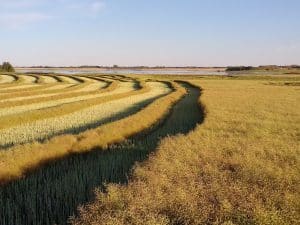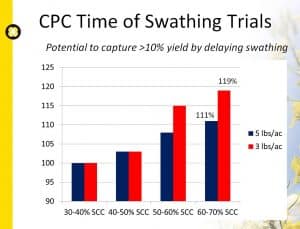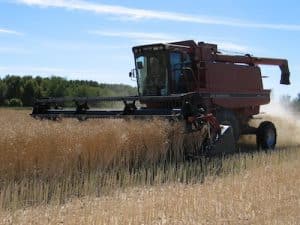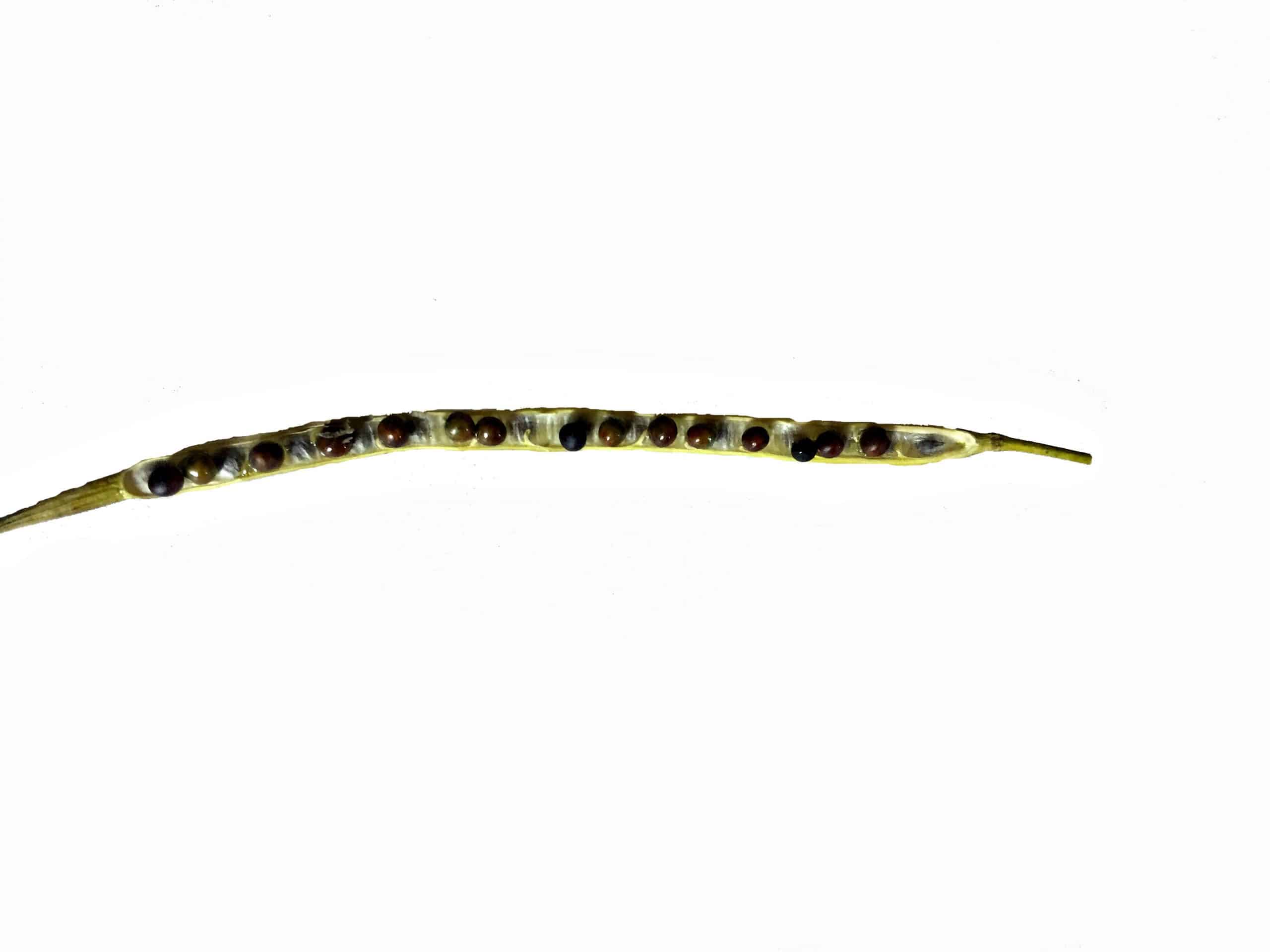Now that we have your attention, we want to make you aware that swathing or straight combining too early can result in lost yield and quality potential. We would also like to provide some ideas of productive things to attend to while waiting for the proper swath or harvest timing so that you have a safe and efficient harvest.
While harvest may be the day you’ve been looking forward to since you saw your canola field emerge this spring, don’t let this influence your decision on when to cut it. Let the state of seed colour change be your primary decision maker, because swathing too early can cost you yield that you’ve worked very hard throughout the growing season to increase.
Here are a few considerations to keep in mind when considering when to start swathing:
- Research has shown that swathing at 60-70% seed colour change (SCC) produces higher yields than canola swathed early and over 10% more yield than canola swathed at 30-40% SCC.
- New hybrids (even those that aren’t primarily marketed as pod shatter tolerant) are better at resisting shattering than older varieties that were grown when 30-40% SCC was recommended, as noted in a recent CARP study conducted at IHARF.
- Swathing too early can result in a notable proportion of green seeds that may not cure in the swath which would cause a higher green seed count in the sample. The only way to clear green seeds in swath is from rainfall bringing seed moisture back up to near 20% and most of western Canada is not necessarily expecting any more moisture. Waiting until the majority of the crop has reached 60% SCC on the main stem will reduce the risk of down grading.
- Which of my other crops need attention first? Even though canola may be your favourite crop, it may not be ready to cut/harvest before your other crops (lentils, barley, peas, etc.). Attend to those crops first and continue to monitor your canola fields for an appropriate maturation stage.
- If you miss the 60-70% SCC window you could use it as an opportunity to try out straight cutting!
- If you have lower plant counts in your canola, it can be swathed even later, as more yield will come from side branches (with lower plant populations). At 10 plants per square foot, about half the yield will come from main stem pods and half from branches. At 5 plants per square foot, two thirds of the yield comes from side branches. At 3 plants, three quarters of the yield comes from side branches. Read more about this here.
- Make sure you walk into different areas of the field to determine SCC. Some areas of the field may be more mature but have much lower yield potential as they are ripening prematurely due to disease or insect damage. Sometimes, in order to capture maximum yield potential for the field, you may need to forego some seed loss in these low yielding areas, especially if they are only a small portion of the field. In this case, focusing on the Big Picture is best.
- Seek another opinion if you are unsure of SCC. Give your local CCC agronomy specialist a call and talk to them about seed colour change levels and yields. They are trained, have experience in determining SCC and can answer your other canola agronomy questions or provide assistance and considerations for this major decision.
- You could experiment by testing out different swath timings (ex. 1/3 of a field at 40-50% SCC, 1/3 of that field at 50-60% SCC and 1/3 of that field at 60-70% SCC) and then collecting yield, green seed and grade on each. Use the protocols on the UCC website for guidance on how to run a precise trial.
- What if your neighbour starts swathing? It may be tempting to start swathing as well, but you have to trust that your assessment of SCC is accurate. Even if you have planted the same variety “around the same planting date,” field differences exist and contribute to different maturation times. Perhaps it is a good idea to go and check the neighbour’s field to determine if the SCC is different from your fields. If the neighbour is swathing too early, don’t let that diminish yield opportunities for your farm.
- Listen to the insight that CCC agronomy specialist Dan Orchard has to offer on canola swath timing on this short and interesting podcast.
- Plan for a safe harvest! See the Farm safety article for details.
Further reading:
- http://www.canolacouncil.org/canola-encyclopedia/managing-harvest/harvest-management/#assessing-crop-maturity
- https://www.canolawatch.org/2017/08/02/swath-timing-for-higher-yield-3/
- https://www.canolawatch.org/2013/08/14/top-10-reasons-why-you-should-wait-to-swath/
- http://www.canolacouncil.org/media/530966/canola_swathing_guide.pdf




